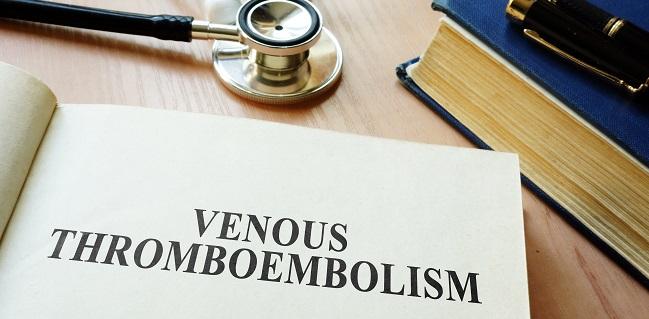New AHA Guidance on Hospital VTE Stresses Risk Assessment, Standardization
Given stagnant rates over the last decade, a multidisciplinary panel says it’s time to start further reducing this complication.

“Over the last 20-25 years, certainly the recognition of this as well as prophylactic methods have improved and become more widely disseminated,” lead author Peter K. Henke, MD (University of Michigan, Ann Arbor), told TCTMD. “But if you look statistically, the overall percentage over the last at least decade to decade and a half has been pretty flatlined—it's about anywhere between 1-2% in more recent case series—and many of these patients may or may not be receiving appropriate prophylaxis. So we thought this was timely just because there hadn't been a substantial improvement or decreased rate overall consistently across the US and across the world from what we could ascertain.”
Published online last week ahead of print in Circulation, the statement highlights the high risk of subsequent death from hospital-acquired VTE as well as its economic toll.
“This policy statement serves as a call to action to reduce incidents of VTE, a preventable disease and a major cause of death in hospitalized patients,” Henke said in a press release.
Finding, Tracking, Preventing
The paper—authored by experts across the fields of vascular medicine and surgery, cardiology, and oncology—highlights five means for improvement:
- Assess and report VTE risk for all hospitalized patients
- Employ preventable VTE as a quality benchmark for hospitals and pay-for-performance programs
- Promote public awareness programs about VTE
- Use standard definitions to track VTE nationwide
- Develop a centralized database that can track the VTE testing, prevention, and occurrence
On the first point, Henke emphasized the importance of standardizing risk stratification nationwide, regardless of whether patients are being treated medically or surgically. “At the least, [use] a risk score [as the existing] risk scoring systems are really quite good,” he said. “There's a couple that are a little more attuned to medical patients, a couple that are a little more attuned to surgical patients—use those appropriately and at least get your risk score so you know who's at low risk and probably doesn't need extensive prophylaxis and those who are at high risk who really do.”
Secondly, he said, once patients are identified as high risk make sure they are prescribed and actually receive prophylaxis, and track how and when they do. “You can prescribe [low molecular weight heparin and unfractionated heparin], but if the patient doesn't get them, then that's not doing any good,” Henke commented. “Sometimes that's obscured when we try to do studies in terms of why patients may get a venous thromboembolism despite apparently getting prophylaxis. So [we need to be] really tagging and having some internal mechanisms to make sure these measures are actually taking place.”
It’s also important to define, on a national level, what constitutes preventable versus nonpreventable VTEs as well as refine the best metrics for tracking this. For example, assessing the quality of a hospital by its VTE rate is “probably not fair or safe and other authors have shown that there's surveillance bias and some other things that will allow very high quality hospitals [to] have sometimes a higher VTE rate because they're more apt to look for them versus those that might not,” Henke said. “So you want to try and capture the patients who fell through the cracks in terms of the risk assessment and are not receiving the prophylaxis and then have a VTE compared to those who've gotten everything correctly and still have a VTE.”
Following last month’s publication of the PRONOMOS trial, which showed a benefit of rivaroxaban (Xarelto; Bayer/Janssen) over subcutaneous enoxaparin in preventing VTEs among a population of orthopedic surgery patients, Henke said one open question relates to the usefulness of direct oral anticoagulant agents in nonorthopedic surgery patients.
Additionally, he called for more research directed at which patients will especially benefit from prophylaxis of any kind. “There is a large number of patients who are pretty safe not to undergo prophylaxis, so we want to apply it smartly because there are some side effects,” Henke said, listing a small risk of bleeding, injection site pain, and costs. “There's a really important study that I think needs to be done based on some of this data,” he said. A randomized control trial in low-risk patients, for example, could compare early ambulation or compression devices versus chemoprophylaxis to find if there's really a benefit of a medical intervention.
It’s likely that “probably half” of postsurgical patients might not need chemoprophylaxis: although the overall rate of VTE is low in these patients, “it's high enough [that] if you apply it across the US and the world, it's really a lot of patients,” he continued.
Lastly, Henke said he hopes that insurers will view this guidance with an eye toward making cost-effective changes. “They're going to have a double-edged sword, but there are some benefits with [electronic health records] in terms of big data tracking and ability to build in some ways to define the variables associated with a VTE that may tell you if it was a preventable one, meaning that should be a quality metric to check on, or no that wasn't preventable you did everything right,” he said. “So that helps kind of give a feedback loop to the system.”
The guidelines estimate that the annual direct and indirect costs of VTE in the US are $7-$10 billion, at least some of which could be recouped if the recommendations for prevention were adopted.
Yael L. Maxwell is Senior Medical Journalist for TCTMD and Section Editor of TCTMD's Fellows Forum. She served as the inaugural…
Read Full BioSources
Henke P, Kahn SR, Pannucci CJ, et al. Call to action to prevent venous thromboembolism in hospitalized patients: a policy statement from the American Heart Association. Circulation. 2020;Epub ahead of print.
Disclosures
- Henke reports no relevant conflicts of interest.


Comments